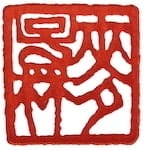Meditation is seen as an ancient panacea to modern problems. Mindfulness and equanimity will help with your productivity at work, relationships at home, reduce your need for certain medication and in general make you a better version of yourself.
But the inward turned gaze often enough does not reveal a tranquil garden, but a junkyard. The promise of stillness and equanimity evaporates in the onslaught of our unruly human minds.
In this conversation with Leo Lok, we investigate how mediation can be a source of greater suffering and contribute to mental illness.
Listen into this discussion of meditation as repetitive stress injury, misconceptions about self/not-self, and how some core tenants have changed their meanings in the translation from the original Poli.
In This Conversation We Discuss:
- Meditation induced illness clinic
- Popularity and promises of meditation today
- Non-self and enlightenment in Buddhism
- Mistranslations in Buddhist concepts
- Goals of meditation in Buddhism
- Meditation can go wrong even when done right
- Signs of problematic meditation in literature
- Progressive stages in Buddhist practice
- Stabilizing realizations from meditation
- Preventing problems in meditation
- Using meditation judiciously
- Meditation as repetitive stress injury
- Eye position influencing meditative states
- The problems that arise when disconnecting from social engagement
- Meditation revealing hidden psychological issues
- Integrating physical movement practices
Chinese Medicine is not limited to herbs and needles. Foods and Moods are also medicine.

I am a practitioner and independent scholar of Chinese Medicine. As a native speaker of multiple Chinese languages and a fluent reader of premodern texts, I am passionate about transmitting ancient knowledge and perspectives from China to the modern audience.
To support my fellow clinicians, I research ancient texts and build fun online courses on various topics in Chinese Medicine. You can assess my various course offerings at https://vooma.thinkific.com
Links and Resources
Cheetah House, resources and support for adverse meditation experiences
Check out Leo’s course on Meditation Induced Sickness, as well as all his other courses.
Also, the terrific podcast series Tales of the Fat Monk, in Episode Seven, Alchemy, Demonology and the Abbot, there’s a discussion that is pertinent to the conversation with Leo.
The following is part of an email exchange between Leo and myself, quite pertinent to the topic of this podcast discussion
As retired scientist Lal P. says on his blog:
“The word “anatta” is NEVER used to indicate that a “self is absent.” For example, in the Ānanda Sutta (SN 44.10) Vacchagotta comes to the Buddha asked “Master Gotama, is it correct to say that there is a “self”?” He used the phrase, “atthi attā” to ask whether there is a “self.” Then he phrased it the opposite way and asked, ” is it not correct to say that there is a “self”?” There he used the phrase, “na atthi attā” to ask whether a “self” does not exist. “
Leo’s note: “atthi attā” and “na atthi attā” are very different from “anatta” in Pali. Contrast this with 無我 vs 非我 in Chinese. They only differ by one character. Contrast this with ‘no self’ vs ‘not self’, they only differ by one alphabet ‘t’. I sometimes wonder if this is another factor that compounds the misunderstanding. In Pali the two phrasings are so distinct in terms of syntax and morphology. Whereas they look so similar in Chinese and English.
Leo’s further note: The contexts in which ‘anatta’ and “na atthi attā” as found in the Pali sutta cannot be more distinct.
“na atthi attā” can stand alone as a sentence meaning “There is no self”. But ‘anatta’ cannot, for it is almost always used as an adjective, like in the phrase ‘sabbe dhamma anatta’, i.e. all dhamma are not not-self.
I recommend Ṭhānissaro Bhikkhu’s illuminating talks on this topic, which have been collected in the following PDF.
https://www.dhammatalks.org/books/#/Archive/Writings/Ebooks/SelvesNot-self210518.pdf
Ṭhānissaro Bhikkhu is one of the top 3 translators of Pali Canon in the world for the last 30 years, along with Bhikkhu Bodhi and Piya Tan. I find his teachings often quite illuminating based on his rare ability to read the original Pali and his own meditative training with the teachers from the Thai Forest Tradition.














